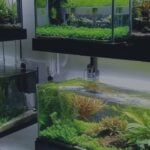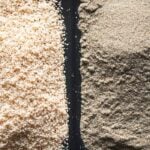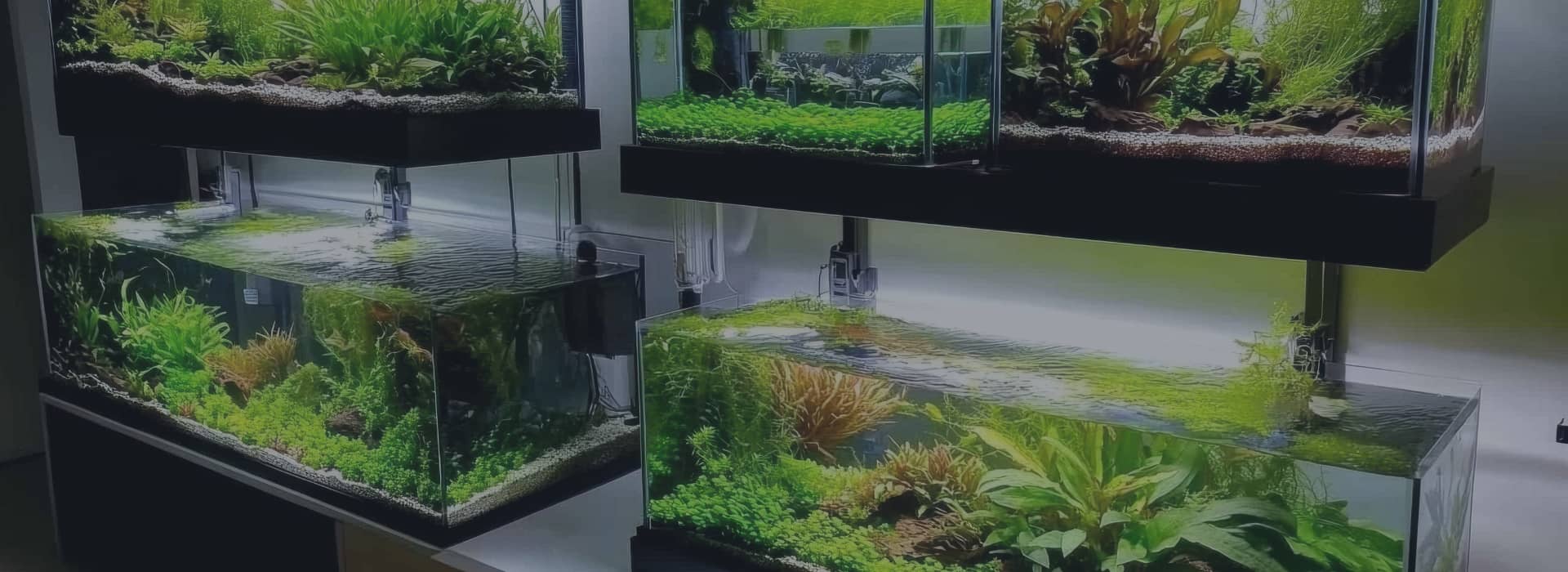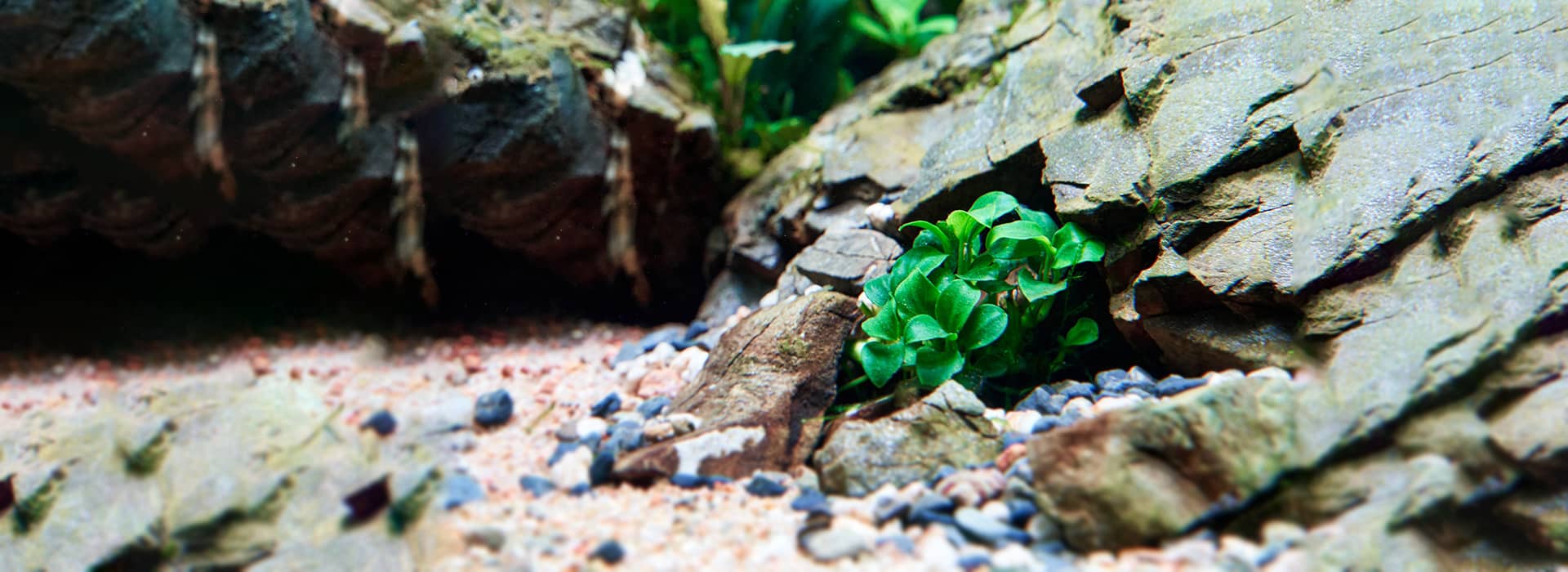Keeping an aquarium is a rewarding and enjoyable hobby that allows you to create a mesmerizing underwater world right in your home. However, proper care and maintenance are crucial for the health and well-being of your aquatic inhabitants. Aquarium cleaning is an essential aspect of ensuring a clean and balanced environment for your fish and other aquatic organisms. It is also the part of the hobby, many fail to grasp the importance of.
In this guide, we will explore the key steps and considerations for effectively cleaning and caring for your fish tank.
Importance of Aquarium Cleaning
The importance of aquarium cleaning cannot be overstated when it comes to maintaining a healthy and thriving aquatic environment for your fish and other inhabitants. Here are some key reasons why regular aquarium cleaning is crucial:
- Water Quality Maintenance: Clean water is essential for the well-being of your fish. Over time, uneaten food, fish waste, and decaying organic matter accumulate in the tank, leading to the build-up of harmful substances such as nitrates. Regular cleaning, including water changes, helps remove these pollutants, ensuring optimal water quality and minimising the risk of fish stress, illness, and even death.
- Waste and Debris Removal: A clean aquarium is not just visually appealing, but it also promotes the overall health of the ecosystem. Cleaning the substrate, removing uneaten food, and maintaining a clean tank surface help prevent the accumulation of waste and debris that can harbour harmful bacteria and contribute to poor water quality.
- Algae Control: Algae growth is a common concern in aquariums and can quickly take over the tank if not properly managed. Regular cleaning helps control and prevent excessive algae growth by removing nutrients and organic matter that algae feed on. By maintaining a clean tank, you can strike a balance and keep algae growth under control, preserving the aesthetics of the aquarium and preventing potential issues such as oxygen depletion and light blockage.
- Disease Prevention: A clean aquarium plays a significant role in preventing the occurrence and spread of diseases among your fish. Poor water quality, contaminated substrate, and unclean surfaces can contribute to the growth of harmful bacteria, parasites, and fungi. Regular cleaning helps reduce these risks by creating a healthier environment, reducing stress on fish, and enhancing their immune systems.
- Oxygenation and Circulation: Cleaning activities such as water changes and substrate cleaning help improve oxygenation and water circulation within the aquarium. Adequate oxygen levels are vital for the well-being of fish and other aquatic organisms. By promoting proper water movement and oxygen exchange, you provide a more favourable environment for your fish to thrive.
- Monitoring and Observation: Regular cleaning allows you to closely observe your fish and detect any changes in behaviour, appearance, or health. It provides an opportunity to spot potential issues early on, such as signs of illness, abnormal growth, or aggression. This proactive approach to monitoring and observation can help you address problems promptly and seek appropriate solutions.
By recognizing the importance of aquarium cleaning and incorporating it into your regular maintenance routine, you create a healthier and more vibrant habitat for your fish. A clean and well-maintained aquarium not only benefits the inhabitants but also enhances your enjoyment of this fascinating hobby.
Equipment and Supplies for Cleaning Aquariums
Having the right equipment and supplies goes a long way in making the entire process smooth and feel less of a chore you hate. Here are some key equipment and supplies you will need:
- Gravel Vacuum/Siphon: A gravel vacuum or siphon is a crucial tool for cleaning the substrate in your aquarium. It allows you to remove debris, fish waste, and uneaten food from the gravel or sand bed without disturbing your fish or disrupting the tank’s ecosystem. It also reduces the effort needed when doing a partial water change.
- Algae Scraper/Pad: An algae scraper or pad is used to remove algae from the glass or acrylic surfaces of the aquarium. It helps maintain clear visibility and prevents excessive algae growth.
- Bucket or Container: You’ll need a clean bucket or container to collect and temporarily hold the water you siphon out during water changes. Make sure it is designated for aquarium use only and is free from any contaminants or chemical residues.
- Water Conditioner: A water conditioner is necessary to treat tap water before adding it to your aquarium. It removes chlorine, chloramines, and heavy metals that can be harmful to fish and helps neutralise any other potentially harmful substances in the water. The tap water should be treated 30 minutes before adding it to the tank.
- Aquarium Glass Cleaner: An aquarium glass cleaner or magnetic algae scraper is useful for cleaning the outer surface of the aquarium glass without having to reach into the tank. It allows you to remove algae and maintain clear visibility without getting your hands wet.
- Filter Media: Proper maintenance of your filtration system also plays a huge role in water quality. Depending on the type of filter you have, you may need to clean or replace filter media periodically to ensure its effectiveness in removing waste and maintaining optimal water conditions. Make sure to never replace all the filter media at once.
- Nets and Brushes: Nets are handy for catching and moving fish during extensive maintenance tasks. Brushes with soft bristles can be used to clean hard-to-reach areas or delicate decorations without damaging them.
- Test Kits: Test kits are essential for monitoring water parameters such as pH, ammonia, nitrite, and nitrate levels. Regular testing helps you maintain optimal water conditions and detect any imbalances or issues that may arise.
- Cleaning Gloves: Cleaning gloves can protect your hands while handling water, cleaning products, or equipment. They help prevent any potential contamination or irritation to your skin.
Choose equipment and supplies specifically designed for aquarium use. Avoid using household cleaning products or tools that may contain chemicals or residues that can be harmful to your fish.
Having the necessary equipment and supplies on hand will make aquarium cleaning and maintenance more efficient and effective. This way, it won’t feel like a burden that you dread facing every time the aquarium needs cleaning.
You can also look into automatic water-changing systems. These systems can make maintenance a lot more convenient especially if you have multiple aquariums.
Aquarium Cleaning Schedule and Routine
Establishing a regular cleaning schedule and routine is crucial for maintaining a clean and healthy aquarium. Here are some guidelines to help you create an effective cleaning schedule:
Daily Tasks:
- Feed your fish appropriate amounts of food, ensuring they consume it within a few minutes to prevent excess waste.
- Inspect the tank for any visible signs of illness, aggression, or abnormal behaviour in your fish.
- Check the equipment, such as filters and heaters, to ensure they are functioning properly.
Weekly Tasks:
- In tanks with a high bio-load (lots of fish or fish that produce a lot of waste) perform a partial water change. Replace around 10% of the aquarium water, depending on the stocking level and water quality. If the tank has fewer occupants or is heavily planted, a 25% water change can be done once every 2-3 weeks.
- Use a gravel vacuum or siphon to clean the substrate, removing debris and fish waste. Focus on areas where waste tends to accumulate.
- Clean the glass or acrylic surfaces of the aquarium using an algae scraper or pad to remove algae buildup.
- Inspect and clean the filter media as needed. Replace any worn-out or clogged media according to the manufacturer’s instructions.
Monthly Tasks:
- Clean and maintain any aquarium decorations or ornaments. Remove any algae or debris that may have accumulated on them.
- Test the water parameters using appropriate test kits. Monitor and adjust pH, ammonia, nitrite, and nitrate levels as necessary.
- Inspect and clean the aquarium hood, light fixtures, and other equipment to ensure proper functioning.
Quarterly or Biannual Tasks:
- Conduct a thorough deep cleaning of the aquarium. Temporarily move the fish and invertebrates to a clean residue-free bucket or anything else that is suited to this task. Drain the tank. Remove all decorations and clean them separately.
- Clean the tank’s interior using an aquarium-safe cleaning solution or a mild vinegar-water mixture. Rinse thoroughly before refilling the tank.
- Inspect and clean the tubing, valves, and other components of the filtration system to maintain optimal performance. Change 50% of the filter media.
- Check the condition of any silicone seals and make any necessary repairs.
All the timeframes mentioned here are just general guidelines. The frequency and extent of cleaning tasks may vary depending on factors such as tank size, fish load, and filtration system efficiency. The best way to figure out what works for you is by observing the condition of your aquarium and adjusting the cleaning schedule as needed.
Maintaining a consistent cleaning routine helps prevent the accumulation of waste, maintains water quality, and ensures a clean and healthy environment for your fish.
Water Changing
Water changing is an essential aspect of aquarium maintenance. Here are some key points to consider regarding water changing and filtration:
Importance of Water Changes: Regular water changes help remove accumulated toxins, waste products, and pollutants from the aquarium water. They replenish essential minerals and trace elements, improve water clarity, and promote overall fish health.
Frequency of Water Changes: The frequency of water changes depends on various factors, such as the size of the aquarium, the number and size of fish, and the water parameters. As a general guideline, a partial water change of 10-25% should be performed once every week/two weeks. Adjust the frequency and volume based on the specific needs of your tank.
Water Changing Procedure:
- Use a siphon or gravel vacuum to remove water from the tank. Gently hover the vacuum over the substrate to lift any debris without disturbing it too much.
- Dispose of the old water in a proper and sanitary manner.
- Treat the fresh water with a suitable water conditioner to remove chlorine, chloramines, and heavy metals before adding it back to the aquarium.
- Gradually refill the tank with the treated water, ensuring a smooth transition for the fish and maintaining stable water parameters.
Cleaning The Filtration System
Cleaning the filtration system is an essential part of aquarium maintenance to ensure its optimal performance. Here are some steps to clean different components of the filtration system:
- Mechanical Filtration (Filter Pads/Sponges):
- Check the filter pads or sponges regularly for clogging and debris accumulation. If they appear dirty or are significantly blocked, it’s time to clean or replace them.
- Rinse the filter pads/sponges in a bucket of aquarium water to remove excess debris. Avoid using tap water as it may contain chlorine or other chemicals harmful to beneficial bacteria.
- Gently squeeze or swish the pads/sponges in the bucket of water to dislodge any trapped debris.
- If the filter pads/sponges are heavily soiled or deteriorated, replace them with new ones taking care to never replace them all at once.
- Chemical Filtration (Activated Carbon, Chemical Media):
- Activated carbon and other chemical media typically need replacement rather than cleaning. Follow the manufacturer’s instructions to determine the recommended replacement frequency.
- When it’s time to replace the chemical media, carefully remove the old media from the filter and dispose of it properly.
- Replace the old media with fresh, high-quality chemical media as directed by the manufacturer.
- Biological Filtration (Bio Balls, Ceramic Rings, etc.):
- Biological media house beneficial bacteria critical for maintaining the nitrogen cycle in the aquarium.
- Avoid cleaning the biological media extensively to preserve the beneficial bacteria colonies. These bacteria play a crucial role in breaking down toxic ammonia and nitrite.
- If the biological media becomes excessively clogged or coated with debris, gently rinse them in a bucket of aquarium water to remove loose debris. Do not use tap water or clean the media too thoroughly to avoid killing beneficial bacteria.
- Filter Intake and Impeller:
- Regularly check the filter intake and impeller for any debris or blockages that may affect water flow.
- If you notice any obstruction, carefully remove it to allow for proper water circulation.
- Cleaning the impeller may be necessary if it becomes excessively dirty or clogged. Refer to the filter’s manual for instructions on how to disassemble and clean the impeller properly.
Remember to follow the manufacturer’s instructions for your specific filtration system and components. Avoid cleaning everything at once to maintain a healthy population of beneficial bacteria. Cleaning different filter components at different times will prevent a complete disruption of the aquarium’s biological filtration.
Cleaning the Substrate and Decorations
Here are some steps to effectively clean the substrate and decorations:
Cleaning the Substrate:
- Gravel or Sand Vacuuming:
- Use a gravel vacuum or siphon specifically designed for aquarium use.
- Begin by turning off any powerheads or water circulation devices to prevent disturbance.
- Insert the vacuum into the substrate, allowing it to sink slightly.
- Move the vacuum in a slow and deliberate motion, gently stirring the substrate to lift any debris and waste.
- As you siphon, the dirty water will be removed, while the substrate settles back down.
- Continue this process in different areas of the aquarium until you have cleaned the desired sections.
- Spot Cleaning:
- For localised areas of heavy waste accumulation, use a small net or a turkey baster to manually remove the debris.
- Carefully scoop out the waste without disturbing the substrate or plants.
Cleaning the Decorations:
- Artificial Decorations:
- Remove any artificial decorations from the aquarium.
- Inspect them for visible debris, algae, or grime.
- Use a soft-bristled brush or a toothbrush to gently scrub off the debris.
- Rinse the decorations thoroughly under running water to remove any remaining residue.
- If needed, soak the decorations in a bucket of water treated with an aquarium-safe cleaning solution or mild vinegar-water mixture for stubborn stains or deposits.
- Rinse the decorations again with clean water and let them air dry before returning them to the aquarium.
- Live Plants:
- While cleaning live plants, it’s important to minimise disruption and damage.
- Use a soft brush or a soft cloth to gently remove any visible debris or algae from the leaves.
- Avoid using any cleaning agents that may harm the plants or the aquarium’s inhabitants.
- Trim off any dead or decaying parts of the plant to maintain their health and appearance.
- Driftwood and Rocks:
- Inspect driftwood and rocks for any visible algae or debris.
- If needed, scrub them gently with a soft brush or a toothbrush.
- Avoid using any harsh cleaning agents or detergents, as they can be harmful to the aquarium ecosystem.
- Rinse the driftwood and rocks thoroughly under running water to remove any loosened debris before returning them to the tank.
- Ornaments with Small Openings:
- For ornaments with small openings or intricate details, use a soft-bristled brush or a toothbrush to clean hard-to-reach areas.
- Rinse the ornaments thoroughly to remove any dislodged debris.
Remember to perform these cleaning tasks using water from the aquarium or conditioned water to avoid introducing any harmful substances or chemicals into the tank. Also, be cautious not to disturb or stress the fish while cleaning the substrate or rearranging the decorations.
Cleaning The Outer Surfaces
Cleaning The Outer Surfaces
Cleaning the outer surfaces of an aquarium not only maintains its appearance but also ensures clear visibility into the tank. Here’s how you can effectively clean the outer surfaces of your aquarium:
- Gather the necessary supplies:
- Clean, lint-free microfiber or soft cloth.
- Non-abrasive glass cleaner or vinegar-water solution.
- Distilled or aquarium water.
- Turn off any electrical equipment:
- Before cleaning the outer surfaces, turn off or unplug any electrical equipment like heaters, filters, and lights to ensure safety.
- Wipe away loose debris:
- Use a dry microfiber or soft cloth to gently wipe away any loose dust or debris from the glass or acrylic surfaces of the aquarium.
- This step helps prevent scratching the glass when you proceed to clean it.
- Clean the glass or acrylic surfaces:
- Spray a small amount of non-abrasive glass cleaner onto a clean, lint-free microfiber cloth.
- If you prefer a natural cleaning solution, mix equal parts of vinegar and water in a spray bottle.
- Wipe the cloth across the glass or acrylic surfaces in gentle, circular motions, applying light pressure.
- For stubborn spots or residue, spray the cleaner directly onto the affected areas and let it sit for a few moments before wiping.
- Rinse and dry:
- If you used a glass cleaner, rinse the cloth with clean water and wring out any excess moisture.
- Wipe the glass or acrylic surfaces again with the damp cloth to remove any cleaner residue.
- Follow up with a dry microfiber or soft cloth to dry the glass thoroughly, ensuring a streak-free finish.
- Address stubborn residue or mineral deposits:
- If you encounter mineral deposits or stubborn residue on the glass, you can use a vinegar-water solution or a commercial aquarium-safe lime and scale remover.
- Apply the solution according to the product instructions and use a soft cloth or sponge to gently scrub the affected areas.
- Rinse thoroughly with clean water and dry the glass completely.
- Clean the aquarium frame or housing:
- If your aquarium has a frame or housing made of plastic or other materials, you can use a mild soapy solution or a specialised aquarium cleaning product to clean it.
- Dampen a cloth with the cleaning solution and wipe the frame or housing, paying attention to corners and edges.
- Rinse with clean water and dry thoroughly.
- Clean the aquarium hood or lid:
- If your aquarium has a hood or lid, remove it carefully and clean it separately using mild soap or a designated aquarium cleaner.
Remember to avoid using harsh chemicals, abrasive cleaners, or rough materials that can scratch or damage the aquarium surfaces.
Troubleshooting Common Aquarium Cleaning Issues
Aquarium cleaning can sometimes come with its own set of challenges and issues. Here are some common aquarium cleaning issues and troubleshooting tips to help you overcome them:
- Cloudy Water After Cleaning:
- Cloudy water is often caused by disturbing the substrate or stirring up debris during cleaning.
- Allow the water to settle and filter the suspended particles out through your aquarium filter.
- Ensure that your filter media is clean and functioning properly.
- If the cloudiness persists, consider performing a partial water change to help clear the water.
- Excessive Algae Growth:
- Excessive algae growth can be due to factors like high nutrient levels or excessive lighting.
- Check your water parameters, especially for ammonia, nitrite, nitrate, and phosphate levels.
- Assess your lighting duration and intensity and adjust them if necessary.
- Ensure proper filtration and regular maintenance practices, such as regular water changes and substrate cleaning.
- Introduce algae-eating organisms, like snails or shrimp, to help control the algae population.
- Accumulation of Debris and Waste:
- If you notice excessive debris and waste in your aquarium, check to see that the filter is working properly.
- Make sure that the filter outlet is placed in such a way that there is adequate water flow through the aquarium.
- Excessive Filamentous Algae on Decorations:
- Filamentous algae can be unsightly and cling to decorations in your aquarium.
- Remove the affected decorations from the tank and scrub them gently with a soft brush or toothbrush.
- Consider reducing the lighting duration or intensity to discourage algae growth.
- Ensure proper nutrient control and maintenance practices to prevent algae from thriving.
- Damage to Aquarium Surfaces:
- Scratches or damage to aquarium surfaces can occur during cleaning if improper tools or materials are used.
- Always use soft, non-abrasive cleaning materials specifically designed for aquarium use.
- Avoid using rough or abrasive materials that can scratch the glass or acrylic.
- Handle cleaning tools with care and avoid excessive pressure while cleaning to prevent damage.
- Fish Stress during Cleaning:
- Cleaning activities can sometimes stress fish due to disturbances or changes in their environment.
- Minimise stress by gradually acclimating fish to cleaning routines.
- Use gentle movements and avoid sudden loud noises or vibrations.
- If possible, segregate or remove sensitive fish during cleaning to reduce stress.
- Unpleasant Odours:
- If your aquarium emits unpleasant odours, it may indicate poor water quality or organic waste accumulation.
- Check water parameters and conduct regular water changes to maintain water quality.
- Clean and rinse filter media regularly to prevent organic matter build-up.
- Ensure proper aquarium maintenance practices and remove any decaying matter promptly.
FAQ
How often should I clean my aquarium?
Regular maintenance is essential for a healthy aquarium. It’s recommended to perform partial water changes of 10-20% every 1-2 weeks, clean the substrate and decorations as needed, and rinse or replace filter media regularly. The specific frequency may vary depending on the size of the tank, the number and size of fish, and the efficiency of the filtration system.
What should I do with my fish during aquarium cleaning?
During cleaning, it’s best to leave the fish in the aquarium. However, if you have very sensitive or stressed fish, you can transfer them to a separate container temporarily, making sure to provide a suitable environment with appropriate water parameters. Keep the container in a safe place away from direct sunlight and maintain a stable temperature.
How often should I clean the filter?
The frequency of cleaning the filter depends on the type of filter and the amount of waste it collects. Generally, it’s recommended to clean or rinse mechanical filter media, such as sponges or pads, every 2-4 weeks, or as needed. Avoid cleaning all the filter media at once to preserve beneficial bacteria that help maintain the aquarium’s biological balance.
Can I use tap water for aquarium cleaning?
Tap water may contain chemicals, such as chlorine or chloramines, that are harmful to fish. Treat tap water with a water conditioner specifically designed for aquarium use. Water conditioners help neutralise harmful substances and make tap water safe for fish. Always follow the instructions on the water conditioner product.
Is it necessary to remove all the water during cleaning?
No, it’s not necessary to remove all the water from the aquarium during regular cleaning. Partial water changes of 10-20% are typically sufficient to maintain water quality. Complete water changes are usually done in specific situations, such as treating a disease or resolving severe water quality issues.
Conclusion
Proper aquarium cleaning is essential for maintaining a healthy and thriving fish tank. Regular maintenance, such as water changes, substrate cleaning, and filtration system upkeep, is necessary to ensure optimal water quality.
By following the recommended cleaning schedule and routine, you can prevent issues like excessive algae growth, debris accumulation, and poor water conditions. Remember to use aquarium-safe cleaning products and avoid harsh chemicals or household cleaners that can harm your aquatic pets.
In addition to regular cleaning, practising prevention measures such as proper feeding, monitoring water parameters, and maintaining a balanced ecosystem can help minimise the need for extensive cleaning.
Always stay attentive to your aquarium’s needs and adapt your cleaning routine as necessary. By dedicating time and effort to aquarium cleaning and care, you can create a beautiful, thriving ecosystem for your fish.








